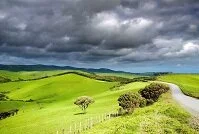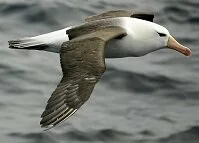Wildlife

Landscape
As a fairly large and geographically diverse country it may seem like New Zealand would be home to great plant and animal diversity, but New Zealand is composed of volcanic islands so the native life in the country is very limited and land animals native to New Zealand are essentially absent. Despite this lack of native plants and animals, the country is fairly diverse today as animals, plants, and seeds from neighboring islands have arrived with the winds, ocean currents, animals, and people.
As an island nation that rose from the sea floor there were no native mammals in New Zealand, although a few bat species arrived thousands of years ago. Other than this, no land mammals existed on New Zealand until the arrival of the earliest people, who arrived only about 1,000 years ago. Until this point no mammals (other than bats) existed on the islands, but these early settlers likely brought pigs, dogs, mice, and rats with them.
Despite the lack of land mammals, New Zealand's surrounding waters are home to mammals, including dolphins and whales. These waters are also filled with thousands of fish, shellfish, and other forms of sea life. In these waters you can find surgeonfish, clownfish, sailfish, puffer fish, butterfly fish, grouper, barracuda, tuna, mackerel, marlin, mahi-mahi, shrimp, krill, crab, seahorses, manta rays, sharks, jellyfish, starfish, and sea urchins among many others. Inland, in the islands' lakes and rivers there are numerous freshwater fish as well, including the spiny lobster (known locally as a crayfish).

Albatross
This water and land environment has proven ideal for birds and today the bird life in New Zealand is incredibly diverse. Additionally, from a historic perspective, these birds have always been the most dominant animals in the food chain as no land mammals (including people) existed to compete. Among these birds are doves, owls, passerines, scrub fowls, heron, the albatross, and hundreds of water fowls. Additional birds native to New Zealand that are now extinct include the Moa, which was heavily hunted by the earliest settlers.
Like the mammalian life, the reptilian and amphibious life is fairly limited. The most common of these animals are those adapted to the water and swimming as sea turtles can be found in the nearby waters. Frogs, toads, lizards, and even some snakes have also been introduced and are now common on the islands.
The insect and other small animal life is fairly diverse as many insects can fly or float and have made their way to New Zealand. These animals include butterflies, bees, ants, flies, snails, spiders, and worms among others.
The plant life on the islands is quite diverse, especially since the volcanic soil is very fertile and the winds, currents, birds, and people have brought with them new plants. Being heavily forested, the largest and most noticeable plants are trees, including the cabbage tree, metrosideros tree, and kauri tree as well as cress, ferns, shrubs, grasses, and flowers.